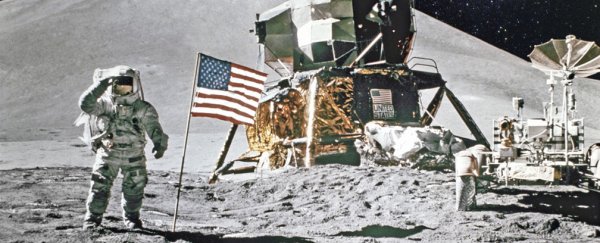It's been over 40 years since humans last set foot on the Moon - once the undeniable centrepiece of our popular fascination with space travel. But we could be heading back there within the next 10 years to set up an affordable and permanent Moon base, according to a new study partly funded by NASA.
A new economic assessment into the feasibilities of an 'Evolvable Lunar Architecture' base suggests that humans would be able to return to the Moon for approximately 90 percent less cost than previous estimates, which ran up to US$100 billion.
The new low-cost strategy would be possible due to leveraging partnerships with the private sector, and predicts that the US could lead an 'International Lunar Authority' comprising both public and corporate interests. Under the plan, it's estimated that humans could return to the Moon within five to seven years at a cost of US$10 billion, the money coming from partnerships with two commercial service providers stumping up about US$5 billion each.
Within 10 to 12 years after astronauts have touched down on the lunar surface, it's envisaged a permanent industrial Moon base could be set up in order to commercially mine hydrogen from lunar ice and repurpose it as propellant for subsequent missions to Mars by NASA's Space Launch System rocket and potentially other spacecraft.
According to the study, this arrangement for fuelling the Space Launch System would be far more affordable and pose significantly less operational risks than supplying from Earth.
"You basically expand free enterprise to the Moon," said Charles Miller, the study's principal investigator, to The Verge's Sean O'Kane.
Due to the achievements of companies like SpaceX and Virgin Galactic, we're more used to seeing private organisations involved in space travel and helping to bolster the efforts of public bodies like NASA. But this new study takes things dramatically further for space-based capitalism.
The proposed commercial Moon mine would be 100 percent privately owned infrastructure, and the whole plan relies entirely on the massive investment for commercial contracts provided by the private sector. As it stands, NASA is limited to an annual budget of just US$4 million for space travel, which is one of the reasons we don't see so much of the Moon anymore in space-related news. Thanks to the lure of commercial monopolies, however, that may be about to change.
